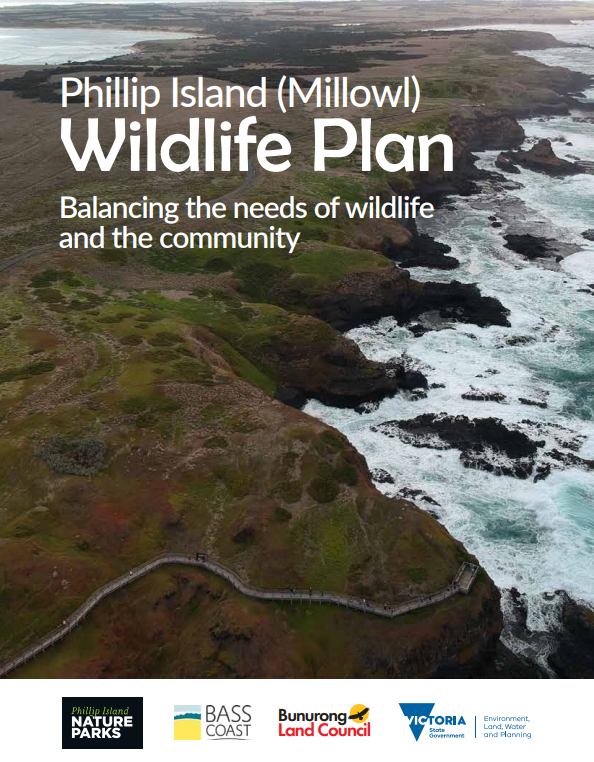Phillip Island’s wildlife is an important part of the community’s identity and economy. Wildlife experiences on the Island generate jobs and revenue and are a major attraction for visitors.
But, there are challenges with native wildlife and other land uses on the Island, such as:
- biodiversity conservation
- agriculture
- cultural values
- infrastructure
- amenity
- public safety
- animal welfare.
The plan aims to achieve a sustainable population of native wildlife so these other activities can continue.
Implementation of the plan is a collaborative partnership delivered with:
- the Department of Environment, Land, Water and Planning
- Bass Coast Shire Council
- Phillip Island Nature Parks
- Bunurong Land Council Aboriginal Corporation
- landowners
- community.

The plan recognises the connection of Traditional Owners to Country and their contribution to the management of the environment. It commits to fostering beneficial and lasting relationships with all Traditional Owners.
Millowl is the Bunurong name for Phillip Island. It is part of the country recognised as being the traditional land and waters of the Bunurong People.
The Phillip Island (Millowl) Wildlife Plan aims to:
- ensure the community values wildlife and contributes to its management
- improve animal welfare
- reduce the negative impacts of wildlife
- maintain a viable agricultural industry
- establish partnerships, including with the Bunurong people, to deliver effective wildlife management.
Philip Island (Millowl) Wildlife Plan - summary (PDF, 695.7 KB)
Phillip Island (Millowl) Wildlife Plan - full version (PDF, 2.6 MB)
Phillip Island (Millowl) Wildlife Plan - frequently asked questions (PDF, 221.7 KB)
Phillip Island (Millowl) Wildlife Plan media release (PDF, 174.5 KB) - 6 December 2021
Page last updated: 06/12/21